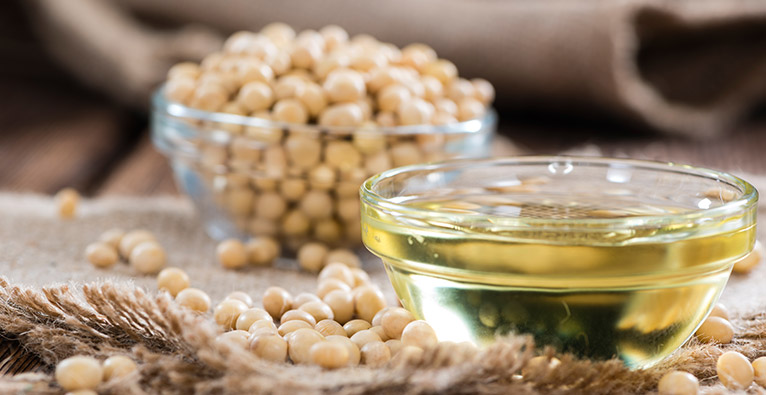
Preparation and Dehulling
The first step in processing soybeans is to properly prepare the soybean for dehulling. This step typically involves using magnets to remove metal and screening to remove impurities that can interfere with the dehulling process. Next, hulls are moved to both increase the protein content of the final meal product and also to improve the efficiency of the solvent extraction process. Finally, mechanical rollers are used to make thin flakes and rupture the cells containing the soybean oil.
Extraction
The extraction process uses hexane or other solvents to wash the soybean oil from the prepared soybean flakes. The design of the equipment varies so that Crown can optimize the amount of solvent and bed depth needed to efficiently wash the flakes, the contact time of the solvent and flakes, and the power and utilities needed to run the equipment. Soybeans are processed with the Model III Extractor.
Desolventizing
Once the oil has been removed by the solvent, the solvent must be removed from both the flakes and the soybean oil. For the flakes, heat and steam are used to strip and recover the residual solvent. For the soybean oil, a distillation system is used to recover the solvent. The desolventizedflakes are now a product and ready for sale as a good source of protein. The soybean oil can be further refined from a crude product to an edible product.
Oil Refining and Processing
Extracted and desolventized soy oil must be further processed to make an edible product. Edible oils are refined to improve the flavor, odor, color and stability using processes that degum, neutralize, bleach and deodorize the oil. These refining processes remove contaminants such as phosphatides, free fatty acids and pro-oxidants.
Further processing of oils and fats is sometimes desired. Some oils are winterized or dewaxed and some are modified to change melting characteristics. Byproducts may be further processed to create value-added products or reduce costs.
Biodiesel
Biodiesel is a renewable fuel derived from fats and oils. Although any source of fat can be used, partially refined soybean oil plays a major part in this industry.
Oleochemicals
There are a significant number of oleochemicals made from the byproducts of soybean oil processing. Whether it’s glycerin from a biodiesel plant or fatty acids from a fat hydrolysis plant, Crown offers many different processes to add value to these fat byproducts.